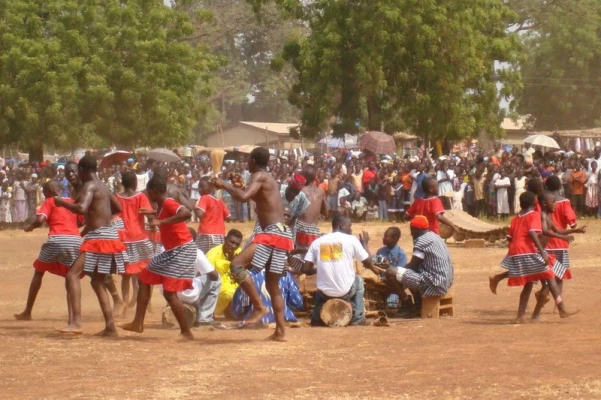Rejecting Compromise: Nkrumah’s...
November 20, 2025

Nestled in the northern reaches of Ghana, bordering Burkina Faso and Côte d'Ivoire, the Dagaaba people, also known as Dagao or Dagara, are an ethnic group with a vibrant cultural tapestry and a rich history dating back centuries. Their language, Dagaare, is a Gur language comprising various dialects spoken across the region, reflecting their deep-rooted connection to the land and its diverse communities.
The Dagaaba people are spread across the northwest corner of Ghana and the Sud-Ouest Region in southwestern Burkina Faso. With a combined population estimated at over one million, they are a significant presence in the Upper West Region of Ghana, particularly in districts like Nandom, Lawra, Jirapa, and Kaleo. Over time, waves of internal migration have also brought Dagaaba communities to towns in the southern part of Ghana, such as Brong Ahafo Region.
The origins of the Dagaaba people trace back to the Mole-Dagbani group, believed to have migrated to the semi-arid Sahel region in the fourteenth century CE. Subsequent migrations led them to settle in the lower northern part of the region by the seventeenth century. Prior to European colonialism, the Dagaaba lived in small-scale agricultural communities, resisting attempts at conquest by neighboring states such as Dagbon, Mamprugu, and Gonja.
Throughout history, Dagaaba communities have had both cooperative and conflictual relationships with neighboring groups. Conflicts, often centered around land rights, have arisen with communities like the Sisala people. Additionally, historical alliances and conflicts, such as those with the Wala people and the Wassoulou Empire of Diola Samory Toure, have shaped their interactions with neighboring entities.
Traditional Dagaaba society revolves around sedentary agricultural communities organized into clans and household groups. The Tengan system, centered around earth deity shrines, plays a crucial role in community governance, with roles inherited within household groups. Elders, known as tengan sob or tindana, hold positions of authority, overseeing rituals and community affairs.Before colonial influence, the Dagaaba were self-reliant in iron production and practiced successful mixed-crop farming. They developed sophisticated musical instruments like the gyle (xylophone) and maintained rich oral traditions, including secular stories and sacred narratives. Economically, Dagaaba communities engage in small-scale agriculture supplemented by off-farm wage income and trade along historic trade routes.
Dagaaba communities historically practiced indigenous traditional religions alongside Islam and Christianity. Their religious practices are deeply intertwined with their cultural identity, with rituals and ceremonies reflecting their spiritual beliefs and values.
Despite modernization and external influences, Dagaaba communities continue to cherish their cultural heritage and traditional practices. Efforts to preserve their language, rituals, and oral traditions ensure that their rich heritage endures for future generations.
The Dagaaba people exemplify resilience, cultural richness, and a profound connection to their land and traditions, making them an integral part of the tapestry of Ghana's ethnic diversity.
November 20, 2025
November 17, 2025
November 13, 2025
November 6, 2025
November 5, 2025
November 4, 2025
October 31, 2025
October 30, 2025
October 30, 2025
October 30, 2025